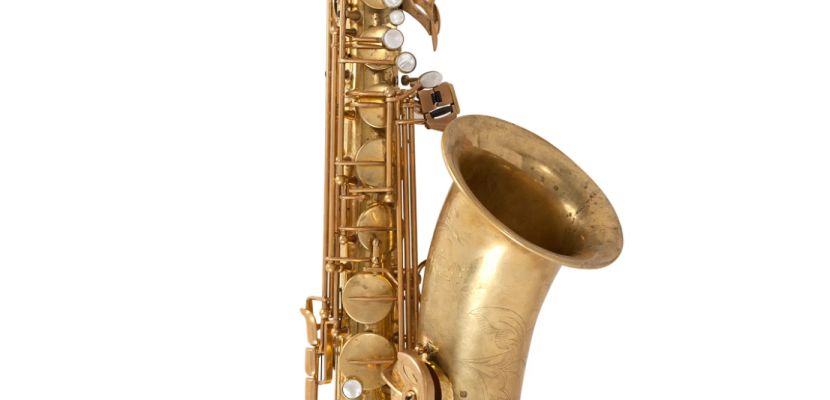Yamaha 82Z Atelier Tenor Saxophone
Ben has always loved Yamaha horns, he started off on a 23 alto, and currently plays a 62 bari and 82Z tenor, so for him getting the 82Z Atelier in was an absolute no brainer. I however have always favoured darker sounding horns with more resistance to offset my naturally bright tone, and as such I’ve never found a Yamaha Tenor that I would be willing to part with a large sum of money for……until now.

First thing to notice on the new 82Z Atelier is the ‘Amber’ finish (also comes in an ‘un-lacquered’ finish), some extra engraving and a big bit of gold sticking out where the neck screw should be…..but on closer inspection it IS the neck screw, wowzers. In my opinion none of these features (especially the engraving!) have any bearing on how the horn sounds, but it looks fresher than the inside of Will’s school blazer. Well done Yamaha.
So at first glance the grumpy old man in me rolled his eyes and muttered something about mutton dressed as lamb or rolling things in glitter. Then I played it, got overwhelmingly emotional and had to sit outside for ten minutes to cool down, stop crying and reconsider some of my most fundamental life choices and how Yusef Lateef might have approached them differently.
Historically Yamaha’s have been for people looking for clarity, accuracy, responsiveness and reliability, and the standard 82Z perfectly represents those values, however the 82Z Atelier (as well as being all those things) also offers a slightly deeper more complex character, adding another tier of excellence to the already stellar Yamaha 'Custom' range. It's very hard to describe, but I'm going to try.
So apart from some aesthetics what actually sets the Atelier model apart from it’s standard counterpart? Well apart from some voodoo refinements made by “the day-to-day interaction between artists and Yamaha Atelier staff” what I can gather is that the main differences are the crook and the bow.
The Atelier features a C1L crook, which has the narrowest bore of any Yamaha crook ever made and unlike the standard C1 crook which has been available as an aftermarket crook for some time, the ‘L’ version uses thinner brass, THINNER BRASS?!
So what does this thinner brass mean in honks and whistles? Well, I’m not 100% sure to be honest but my guess would be responsiveness and the ease with which vibrations are carried from your mouthpiece to the rest of the horn, and that would make perfect sense because the 82Z Atelier is possibly the most resonant and responsive horn I’ve every played, bar maybe a Super 20 …..but it’s not past the watershed so I can’t talk about them.
Now the bow is possibly not so explainable but all I know is that it’s a less gradual curve and a bit more angular and ‘boxy’ putting the bell a bit further away from the body, what difference does this make? I have absolutely no idea, BUT we know that the crook curve and angle is incredibly important, so it would make sense that the geometry of ‘the other curvy bit’ would be of relatively high importance right? Maybe. The other horns that spring to mind with a large bell to body measurement are Keilwerths, so maybe ze Germans have yet again been bang on the money all along?
It’s also worth commenting on the action because along with being super even, straight out of the box like all Yamahas, it’s factory set a little lower. So if you’re one of the people who would dismiss Yamahas because of their ‘high and heavy’ action, you can sleep better now because this thing is pinned!
So enough tech spec, how does it play? ….flawlessly. It’s so easy to have good tone on this it’s almost laughable. It has that rawness you get with an old Conn with the kind of responsiveness you get with a solid silver Yanagisawa, resulting in a horn which offers the widest most accessible spectrum of dynamics that I’ve ever experienced on a saxophone. Furthermore, the tuning is so immaculate that I bet if you’ve ever had doubts about your tuning and you play this as a reference, you’ll find you’ve been lipping about half the notes on your saxophone to get them in tune! And as stupid as it feels to comment on one particular note on a sax, I promise you the palm D on the Atelier (the least favourite note on my horn) is the most dulcet D I’ve ever played.
Disclaimer: The model I'm reviewing has no high F# key, now I'm not going to open that can of worms but all I'll say is that the only other 82Z Atelier I've played was unlacquered WITH the F# key and the one we have now I seem to be a little bit more in love with. Draw your own conclusions from that, end of discussion. ;)
In a nutshell, the 82Z Atelier has not only managed to strengthen the bond between Yamaha and it’s die hard fanbase, but also offers something to those people like me who have never found what they were looking for in a Yamaha tenor sax. Easily my second favourite new horn on the market right now, possible contender for first ….let me just check my bank balance ;)
View full product listing here






